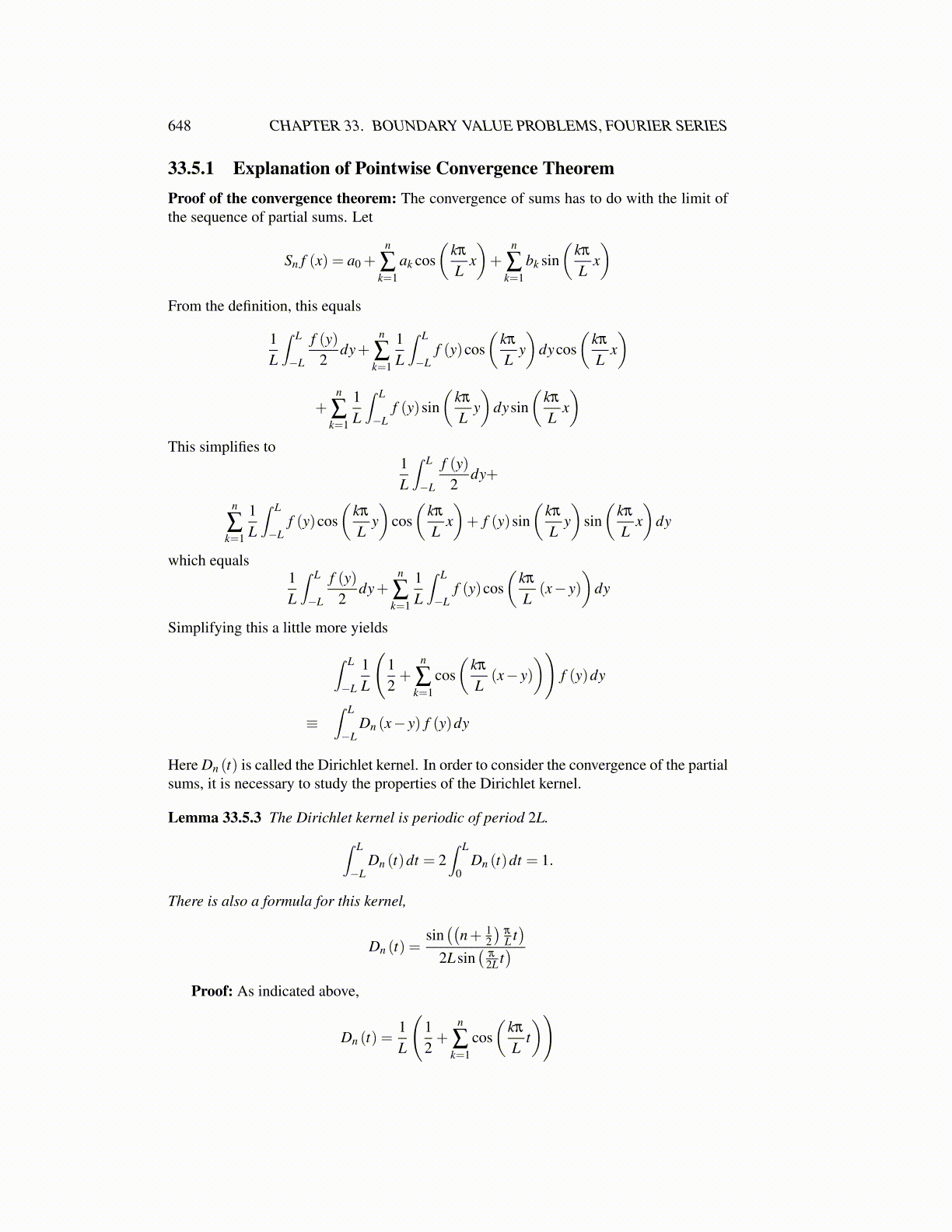
648 CHAPTER 33. BOUNDARY VALUE PROBLEMS, FOURIER SERIES
33.5.1 Explanation of Pointwise Convergence TheoremProof of the convergence theorem: The convergence of sums has to do with the limit ofthe sequence of partial sums. Let
Sn f (x) = a0 +n
∑k=1
ak cos(
kπ
Lx)+
n
∑k=1
bk sin(
kπ
Lx)
From the definition, this equals
1L
∫ L
−L
f (y)2
dy+n
∑k=1
1L
∫ L
−Lf (y)cos
(kπ
Ly)
dycos(
kπ
Lx)
+n
∑k=1
1L
∫ L
−Lf (y)sin
(kπ
Ly)
dysin(
kπ
Lx)
This simplifies to1L
∫ L
−L
f (y)2
dy+
n
∑k=1
1L
∫ L
−Lf (y)cos
(kπ
Ly)
cos(
kπ
Lx)+ f (y)sin
(kπ
Ly)
sin(
kπ
Lx)
dy
which equals1L
∫ L
−L
f (y)2
dy+n
∑k=1
1L
∫ L
−Lf (y)cos
(kπ
L(x− y)
)dy
Simplifying this a little more yields
∫ L
−L
1L
(12+
n
∑k=1
cos(
kπ
L(x− y)
))f (y)dy
≡∫ L
−LDn (x− y) f (y)dy
Here Dn (t) is called the Dirichlet kernel. In order to consider the convergence of the partialsums, it is necessary to study the properties of the Dirichlet kernel.
Lemma 33.5.3 The Dirichlet kernel is periodic of period 2L.∫ L
−LDn (t)dt = 2
∫ L
0Dn (t)dt = 1.
There is also a formula for this kernel,
Dn (t) =sin((
n+ 12
)π
L t)
2Lsin(
π
2L t)
Proof: As indicated above,
Dn (t) =1L
(12+
n
∑k=1
cos(
kπ
Lt))